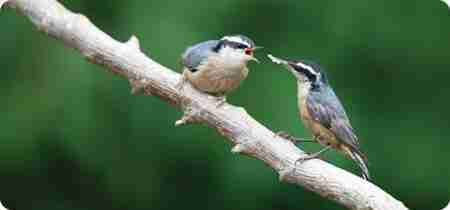[et_pb_section fb_built=”1″ _builder_version=”4.16″ global_colors_info=”{}”][et_pb_row _builder_version=”4.16″ background_size=”initial” background_position=”top_left” background_repeat=”repeat” global_colors_info=”{}”][et_pb_column type=”4_4″ _builder_version=”4.16″ custom_padding=”|||” global_colors_info=”{}” custom_padding__hover=”|||”][pac_divi_table_of_contents _builder_version=”4.22.1″ _module_preset=”default” default_state=”closed” included_headings=”off|on|on|off|off|off” level_markers_1=”whole” hover_enabled=”0″ sticky_enabled=”0″][/pac_divi_table_of_contents][et_pb_text _builder_version=”4.16″ background_size=”initial” background_position=”top_left” background_repeat=”repeat” global_colors_info=”{}”]As the rhythm and hum of urbanization intensify worldwide, an unexpected development unfolds in the heart of our cities. Amid the architectural marvels and imposing city skylines, safe havens for our feathered friends are emerging, shaping the metropolitan landscape into intricate Urban Bird Sanctuaries. Adorned with rooftop gardens and fitted with bird-friendly glass, these towering edifices provide a breathtaking backdrop and welcome respite for various bird species. This enchanting transformation is not only testament to innovative urban planning but also to the incredible adaptability of nature. So, get ready to explore how, against all odds, the rise of urban Bird Sanctuaries is fostering a steadily thriving habitat for many avian species—the Urban Birds—in the bustle of city life.

Examining the Impact of Urbanization on Bird Populations
Urbanization has drastically changed our landscapes with growing cities and transforming skylines. However, it’s not just us humans who are noticing the difference. Despite the fast pace of urban development, the plight of urban birds has not gone unnoticed.
The Plight of Urban Birds in Rapidly Developing Cities
Rapid urban development often robs birds of their traditional nesting and feeding grounds. High-rise buildings, glass windows, predation by urban animals, and various other aspects of city life can pose significant threats to our feathered friends. However, it’s not all doom and gloom! Despite facing numerous challenges, some bird species are demonstrating incredible resilience and adaptability to city living.
Peculiar Advantages of Urbanization for Bird Species
Urbanization isn’t entirely disastrous for bird populations. The heat produced by cities can provide ideal thermal conditions for some species. In addition, feeding by humans increases food availability and diversity. With less competition from other wildlife in urban settings, certain bird species have surprisingly shown considerable adaptability in the face of urbanization.
Transforming City Skylines into Bird Sanctuaries
Though urbanization poses substantial challenges to bird species, innovative minds have sought to turn these soaring city skylines into bird sanctuaries. This transformation has gained momentum due to extensive research and creative architectural innovations aimed at accommodating our avian allies.
Adaptive Architectural Innovations for Bird Habitation
Architects now consider the needs of urban birds when designing buildings. Subtle adjustments include incorporating nesting and feeding sites into building designs, and using textures and patterns that attract birds. Structures such as green roofs, vegetated facades, and balconies are designed to accommodate bird life.
Initiatives in Urban Planning for Avian Accommodation
Urban planners are increasingly taking bird conservation into account. Changes to city planning such as constructing bird-friendly buildings, preserving city parks mean that birds can thrive alongside humans in our shared urban spaces.
The Effectiveness of Rooftop Gardens as Bird Sanctuaries
The rise of urbanization doesn’t necessarily mean the demise of bird sanctuaries. Instead, city dwellers and architects alike are finding ways to facilitate bird life, even in the busiest of cities. Enter the rooftop garden!
Role of Rooftop Gardens in Urban Bird Survival
Rooftop gardens have proven to be invaluable resources for bird conservation efforts in urban landscapes. They provide the necessary habitats for nesting, feeding, and escaping from the city’s hustle and bustle. Their significant contribution to heat reduction also helps to create ideal thermal conditions, encouraging birds to reside in them.
Benefits of Green Roofs to City-Dwelling Birds
Green roofs are incredibly beneficial for urban birds. They offer birds food and shelter amid the urban jungle, providing much-needed green space in heavily concreted city centers. From sunshine to rain, these green roofs behave almost the same as the ground, allowing the birds to thrive in environments similar to their natural habitats.
Bird-Friendly Glass: A Step Towards Urban Bird Conservation
Another exciting step in urban bird conservation is the introduction of bird-friendly glass. This specialty glass is designed to prevent bird collisions – a common and often fatal occurrence in cities.
How Bird-Friendly Glass Reduces Avian Fatalities
Bird-friendly glass incorporates patterns that are visible to birds, but not to the human eye. By appearing as a solid barrier rather than clear space, it discourages birds from flying into windows, dramatically reducing bird deaths in urban areas.
Implementing Bird-Safe Design in Urban Architecture
As awareness of bird collisions increases, steps are being taken to incorporate bird-safe designs in urban architecture. This includes installing bird-friendly glass and using external building treatments. Lighting design is also being considered, with minimal lighting used to decrease collisions.

Species Thriving in Urban Bird Sanctuaries
Urbanization isn’t negatively impacting all bird species. Some bird species are not only surviving but thriving in city landscapes.
Bird Species Adapting to Urban Life
Birds such as pigeons, sparrows, and starlings have become synonymous with city living. By adapting their behaviors to fit the urban landscape, these species have become successful urban dwellers. They exploit the urban resources, taking advantage of the food and nesting sites that cities provide.
Impact of City Living on Bird Behavior and Diversity
City living is producing some profound changes in bird behavior and diversity. Urban birds are developing coping mechanisms to survive, like becoming more flexible in their eating habits or changing their nesting patterns. Interestingly, some urban settings are showing surprisingly high levels of bird diversity, largely as a result of the diversity in urban habitats and bird-friendly initiatives.
Protecting Urban Birds: Policies and Legislation
Protecting urban birds requires not only innovative design and planning but also government policies and local regulations.
Role of Environmental Policies in Urban Bird Conservation
Government policies play a critical role in urban bird conservation. Policies encouraging the integration of green spaces into urban planning, the use of bird-friendly building materials, and restrictions on harmful practices can significantly benefit urban bird populations.
Influence of Local Laws and Regulations on Urban Bird Sanctuaries
As well as governmental policies, local laws and regulations greatly influence the health and success of urban bird sanctuaries. Strict enforcement of these rules can ensure bird-friendly practices are carried out, and fines or other repercussions can deter harmful behavior.
Community Involvement in Bird Conservation Efforts
Community-led initiatives have been shown to significantly bolster bird conservation efforts in urban settings.
Public Awareness Campaigns and Their Impact
Public awareness campaigns are crucial in urban bird conservation. They educate people on the importance of birds, the threats they face, and simple actions they can take to help. Whether it’s feeding birds responsibly or minimizing light pollution, every bit helps.
The Importance of Community-Driven Initiatives in Bird Conservation
Communities can and have made significant contributions to bird conservation efforts, whether through citizen science projects, community-led initiatives, or individual actions. Engaged communities can greatly influence policy decisions and promote bird-friendly practices in their local area.
Technological Innovations Aiding Urban Bird Sanctuary Development
Technology is making it easier than ever to keep our skies filled with the chirping of birds.
Use of Technology in Monitoring Bird Populations
Advanced technology is increasingly being used to monitor urban bird populations. This can involve anything from simple smartphone apps to more advanced technologies like digital ornithology platforms. These technologies provide vital data, aiding in conservation work.
Emerging Technologies Aiding in the Design of Bird-Friendly Urban Spaces
From designing bird-friendly glass to creating virtual reality models of potential bird habitats, technology is playing a significant role in the creation of urban bird sanctuaries. It’s helping to create safer, more sustainable environments for urban birds.
Building Bird Sanctuaries: Case Studies
Around the globe, there have been some truly inspiring examples of new and innovative approaches to creating urban bird sanctuaries.
Successful Examples of Urban Bird Sanctuaries
From New York City’s Central Park to London’s Richmond Park, cities worldwide have successfully created sanctuaries for city-dwelling birds. These parks and gardens provide green spaces amidst the dense cityscapes for these birds to thrive and flourish.
Lessons Learned from Existing Bird-Friendly City Innovations
There’s much to learn from these urban bird sanctuaries. Key lessons include the importance of providing a wide range of habitat types, preserving natural landscapes within the city, and getting citizens involved in conservation efforts.
Future Outlook on Urban Bird Sanctuaries
Looking to the future, there’s scope for both optimism and ongoing challenges in the realm of urban bird conservation.
Predicted Trends in Urban Bird Sanctuary Design
As urbanization continues apace, the need to incorporate bird-friendly designs into city planning will only intensify. Expect to see a rise in green spaces, bird-friendly buildings, and more technological integration in conservation efforts.
Challenges and Opportunities for Future Urban Bird Conservation Initiatives
While the challenges for urban bird conservation remain considerable, so too do the opportunities. Growing public awareness and increasing support from communities and governments alike suggest a positive future for urban birds. However, there’s no room for complacency! Ongoing efforts will be required to ensure that our urban landscapes not only accommodate our feathered friends but provide safe and sustained habitats for them to thrive.[/et_pb_text][/et_pb_column][/et_pb_row][/et_pb_section]



